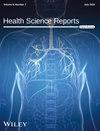Predicting Factors Affecting Survival Rate in Patients Undergoing On-Pump Coronary Artery Bypass Graft Surgery Using Machine Learning Methods: A Systematic Review
Abstract
Background and Aim
Coronary artery bypass grafting (CABG) is a key treatment for coronary artery disease, but accurately predicting patient survival after the procedure presents significant challenges. This study aimed to systematically review articles using machine learning techniques to predict patient survival rates and identify factors affecting these rates after CABG surgery.
Methods
From January 1, 2015, to January 20, 2024, a comprehensive literature search was conducted across PubMed, Scopus, IEEE Xplore, and Web of Science. The review adhered to the Preferred Reporting Items for Systematic Reviews and Meta-Analyses (PRISMA) guidelines. Inclusion criteria included studies that evaluated survival rates and predictors associated with CABG patients during the specified period.
Results
After eliminating duplicates, a total of 1330 articles were identified. Following a systematic screening, 24 studies met the inclusion criteria. Our findings revealed 43 distinct factors influencing survival rates in patients undergoing CABG. Notably, five factors—age, ejection fraction, diabetes mellitus, a history of cerebrovascular disease or accidents, and renal function—were consistently identified across multiple studies as significant predictors of postsurgical survival.
Conclusion
This systematic review identifies key factors influencing survival rates after CABG surgery and highlights the role of machine learning in improving predictive accuracy. By identifying high-risk patients through these key factors, our findings offer practical insights for healthcare providers, enhancing patient management and customizing therapeutic strategies after CABG. This study significantly enhances existing literature by combining machine learning techniques with clinical factors, thereby improving the understanding of patient outcomes in CABG surgery.

 求助内容:
求助内容: 应助结果提醒方式:
应助结果提醒方式:


